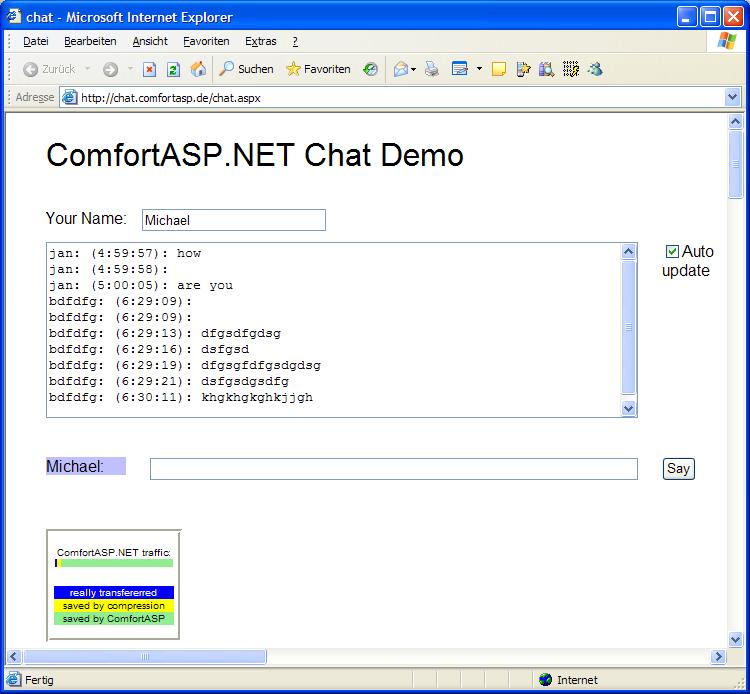Months ago I started several chats with a lot of AJAX developers, some are using my Ajax.NET Professional [1] library, others are working directly with the XMLHTTPRequest object. I had a look around and found that there are a lot of other libraries that are not working like my lib. The big difference is that they are using ASP.NET in the traditional way, drag&drop web controls on the page, add some event handlers and write two or three lines of code. With Ajax.NET Professional I completly remove the web controls from my mind. Some parts of my web sites are using web controls for initial display, but most of them are using about 95% JavaScript code.
Why is Ajax.NET Professional working like this?
The main reason was that I want to have the minimized traffic size to communicate with the server. If I'm thinking of an chat application I will always only transfer the new messages from the client-side to the server, and I'd like to get notified if there is a new message on the server waiting. With Ajax.NET Professional you can do exact this, only transfer the data you want, nothing more.
Today I had a look at the ComfortASP [2] library developed from a good friend here in Nuremberg. The web application looks nice:

Now, playing around I started my favorite tool Fiddler. And what did I see?

Think of a slow connection, yes, today we all have broadband connections like DSL or ADSL+, but do we have this all the time? I started using my T-Mobile MDA Compact II to run AJAX enabled applications, but they are still slow, why?
If you have a detailed look in the chat example log history in Fiddler you will see that on every post (polling for new messages) we have around 718 (request) + 1772 (response) = 2.5 kB. This is sent over the line on each call for this small web application...
[Sorry, I have to check my GPRS contract if the data fits in my free contingent for this month.] ;)